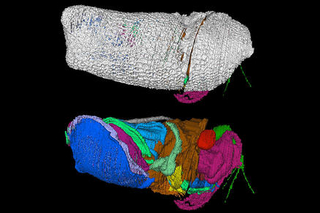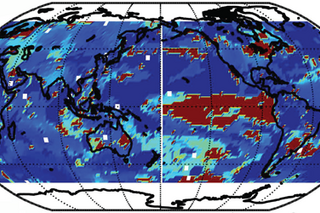EPS News
-
Finding the ‘breath of life’ in a tiny fossil
A new crustacean species, *Spiricopia aurita*, from 430-million-year-old rocks in England shows ancient gills and limbs, hinting early heart evolution
-
Dinosaurs put all colored birds’ eggs in one basket, evolutionarily speaking
A new study reveals that bird egg colors evolved from dinosaurs, not independently. Dinosaur eggs from open nests showed pigments used by modern birds
-
Study: Climate change will alter water sources for Atlantic Ocean circulation system
A study finds that climate change may shift the water sources for the Atlantic Meridional Overturning Circulation, altering its future behavior.
-
Dinosaur extinction drove pulses of fish diversification
Yale’s Pincelli Hull co-authored a study showing fish evolved rapidly in two phases after the K/Pg extinction, using fossil analysis techniques.
-
The Search for ET May Be Missing Life on Low-Oxygen Worlds
1.87 billion years ago, Earth’s oxygen was very low. This challenges how we search for alien life, as future telescopes may need to detect low levels.
-
Synopsis: Climate Noise Has Shades of Pink
Earth’s surface temperatures exhibit “pink noise,” which may explain the 2001-2010 global warming pause by interacting with greenhouse gas effects.
-
Archived’ heat has reached deep into the Arctic interior, researchers say
Warmer water from afar is penetrating the Arctic’s interior, potentially melting sea ice if it surfaces, a study finds.
-
Jie Deng has recently been awarded AGU’s Study of the Earth’s Deep Interior Graduate Research Award.
Major: Melting of Earth Materials (Lee & Karki) Minor: Mantle Anisotropy (Long)
-
Solving the mystery of weak El Niños
El Niño events may be due to warming in the North Atlantic and stronger Pacific winds. Future El Niño activity could intensify as trends reverse.
-
Rethinking planetary climate controls
Yale researchers found Earth’s early warmth was due to high CO2 levels, maintained by reverse weathering in silica-rich oceans.










